
10 minute read
Safer surveying through automationy
through automation SAFER SURVEYING DAVID SHIPMAN
Reducing the safety risks our workforces are exposed to is vital, and there have been many initiatives to keep railway workers safe from harm.
Of course, the best way of doing this is by taking people away from the live railway altogether. This is great in theory, but how do we do this in practice?
It requires us to use new ways to complete all those tasks currently undertaken by people out on the railway. In terms of surveying, this means we have to find new methods to: » Gather information about existing assets; » Review and assess that information; » Visualise new and modified assets; » Monitor the progress of construction.
What are our options?
Existing aerial imagery plays a part, particularly in the early
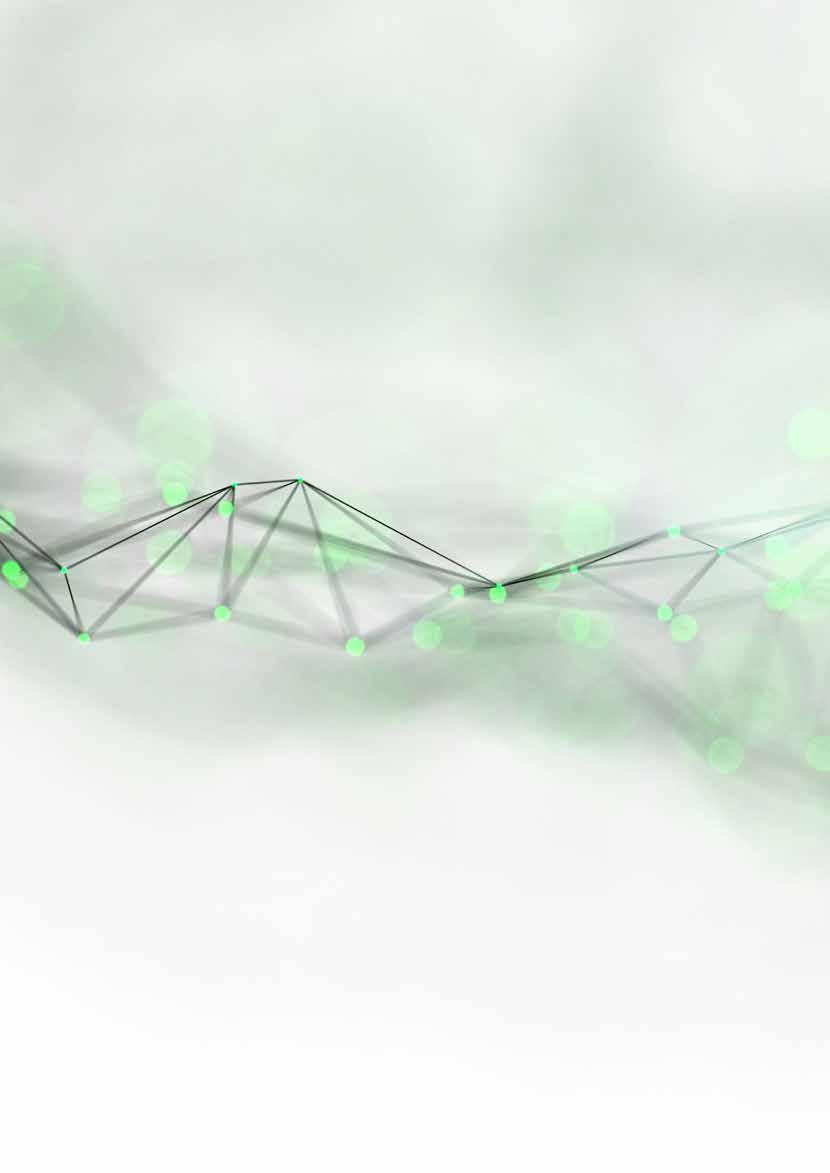
planning stages. However, it can lack the accuracy required for detailed design and doesn’t capture the necessary drivers’ perspective for signal sighting and route learning, especially when video footage is required to support these activities. A further risk with using existing data is that footage may not be sufficiently recent, depending on when the area was last surveyed. The latest changes may not be captured - missing essential detail for renewals or enhancement projects and undermining the quality of the survey and the accuracy of the finished design. If this is discovered at a late stage of a project, the cost of rectification is far greater than the cost of getting it right before design has commenced.
The Signalling Innovations Group (SIG), now part of the Network Services directorate within Network Rail, works hard to offer answers to the rail industry. Our range of tools and services are designed to keep individuals away from the operational railway without compromising on detail.
Train-borne data capture uses laser, infra-red and 4K video equipment attached to Network Rail’s inspection fleet. Commissioned early in the project lifecycle, it can provide an up-to-date record of the asset with an accuracy of just a few millimetres. This is precise enough to meet the demands of multiple disciplines, without exposing workers to the risks of undertaking traditional manual surveys on the live railway. Lowering the risk to the workforce is complemented by time and cost reductions.
Using data from the onboard systems with SIG’s suite of advanced tools, asset and network features can be captured with geo-location, and exported as a threedimensional model using SIG’s System Data Exchange Format (SDEF), for use in other tools alongside the laser point cloud and video data. Overlaying video with laser data enables highly accurate measurements in three dimensions and, with data captured across the whole project area, there is no need to revisit sites to check or recapture information if the design needs change.
New design, such as new signal structures and overhead gantries for signalling and power, can then be added as virtual-reality models, enabling planned changes to be visualised easily. For signalling renewals, this has revolutionised the signal sighting process; the traditional method of an expert committee attending each signal location is replaced with PHOTO: WWW.ENABLEMYTEAM.COM
an office-based exercise where the design proposal can be viewed in context.
The SDEF model can then be analysed further in other SIG tools to confirm structure clearances and overall signalling headways. Finally, the data is exported and automatically populates the sighting form, taking minutes to create what would previously have taken hours to produce manually.
Using this process reduces, or even eliminates, hundreds of site visits, keeping the workforce away from the live railway.
For other project purposes, which may not need quite such detailed measurements, we utilise our Tail Lamp Camera, which captures high-quality images from the front of regular passenger and freight trains. Fitted and removed during timetabled stops, multiple data-collection runs can be made in one day, often at very short notice. Once processed, these images can be used to identify and tag assets whilst taking measurements with an accuracy of a few centimetres. This rapidly deployable solution enables frequent updates to be captured throughout the project construction phase, again reducing the need for site visits.
Processing the data Intensive automated collection gives us far greater amounts of raw data than we have ever had access to before, but, to be truly useful, it needs to be turned into meaningful information that can actually form the basis for design. So how do we process all this data, and what more can we do to make it even more useful?
Once video and laser data are captured from our train-mounted systems, it is processed to merge the different streams and make sure that they align in terms of position and time. This already gives us a huge advantage over traditional manual surveys that involve teams of engineers out on the track, finding the assets as they walk through the site and establishing position using manual methods such as measuring distances from the nearest calibration point.
Now, any asset that is observed in the recorded images will be located with highly-accurate, real-world positioning using laser data and 3D positioning systems. But this still involves a human technician working through the video to identify each asset in the first place.
One industry-changing approach is to automate the task of scanning through video images and reliably identifying our assets and their positions. Advanced machine learning is the obvious way to tackle this, but, while used with great success in some areas, it’s still a developing solution to the complexity of automatically finding a wide range of object types.
This is because we aren’t looking for the cases where something abnormal appears (such as when looking for defects in a top-down view of the rail head before categorising those defects, or spotting a person in a place they shouldn’t be). The drivers’ eye view of the railway contains a lot of ever-changing visual information and we’re trying to find the objects of interest (for example signals, signs, and other equipment) in amongst the countless many artefacts that dominate the image - every frame is, in effect, full of abnormals!
As reported in a previous issue of Rail Engineer (issue 174, May 2019), the SIG team recently undertook several different surveys of a single site, the Midland Railway Centre at Butterley, in order to collect multiple datasets that would help understand how to integrate and merge data from different sources. Some of this data, as illustrated here, has been used to demonstrate significant steps forward in the automated detection of assets. In the example shown, this includes the rails and a complex signal structure, but it can extend to a variety of other objects on and about the railway, including breaking down the more complex items into key components – for example a colour light signal could be a combination of a signal head, a route indicator and a post. Other possibilities have emerged from working with these datasets, and a hugely exciting development is the generation of point cloud data directly from video footage. Point cloud data is used to PHOTO: WWW.ENABLEMYTEAM.COM

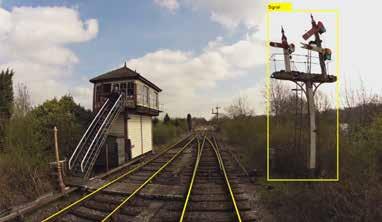
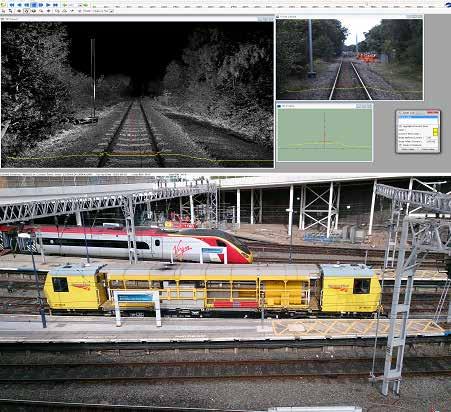

build 3D models, either through laser scanning of existing details or as the output of 3D design processes. Being able to build a suitably accurate level of detail directly from video sources offers great economies. While it may not give a full model from the rail-mounted viewpoint, it will be more than enough for infrastructure design purposes in most situations and, in complex cases, it can still form the starting point for a more extensive model to be built. Of course, we in the railway world are not alone in facing such challenges. Aspects vary, but often the problems being solved in many other industries are rooted in the same underlying principles.
In the case of processing data for signalling design, we have an advantage that real-time outputs aren’t critical - a process that takes weeks or months isn’t going to be significantly improved by instantaneous data analysis: the saving in this processing time is minimal compared to the time we’ve saved by not sending people out to manually survey the track.
Automating the process
Compare this to a self-driving car - one of the state-of-the-art approaches that uses similar machine-learning techniques. The car needs to continuously interpret the data it ‘sees’ in order to react to ever-changing situations. This is a different scale of urgency, and making the wrong decision could have immediate repercussions.
Rail Engineer | Issue 181 | Jan/Feb 2020 On the other hand, avoiding an obstruction in the road doesn’t necessarily involve working out exactly what that obstruction is so the detail is perhaps not as significant as in our application. The primary need for the car is to avoid the obstacle, although there’s undoubtedly a bit of oversimplification here!
For our own signalling, and other asset design, we need the benefit that can only come from reliably assessing the type and nature of the asset seen. Get that wrong, and the whole design process is undermined. Ultimately, errors and omissions will almost certainly be picked up through testing activities before the signalling system is ever brought into use, but, by this stage, the cost of correction is extremely expensive and causes delay.
However, despite the different end goals, the techniques and technologies needed are much the same.
The aim of automating this aspect of the signalling design process, just like removing the driver from the car, is to eliminate the fallible human element. However, to do so, we need to be sure we’re not replacing it with an even more fallible machine!
This means we need machine learning capabilities that find absolutely every asset of interest: if we’re not sure of that, then someone still needs to manually check through and find the

others, and we get no benefit from the automation. Finding false positives - where we identify something wrongly as an asset - also means we have to carry out manual checks but, in this case, we’re only checking the list of detected assets to eliminate those false positives, so the automation is still adding a lot of value in terms of time and cost. Using computer power to detect assets in this way is still a huge challenge for us, but one which promises to take signalling design into an exciting world of advanced machine learning. At the time of writing, contracts are being prepared that will take us on the next step in this journey. Having fully automated survey and analysis feeding into a far more automated design process is now within reach. By the end of this control period in four years’ time, this is anticipated to become the norm for signalling design.
The SIG surveying and design tools form a growing suite of applications that offer massive safety benefits while significantly reducing costs and timescales; providing not only signalling, but all disciplines with a powerful opportunity to make a powerful step-change in their delivery processes.
David Shipman is innovations engineering manager, Network Rail Signalling Innovations Group To learn more about SIG and its tools, contact sig@networkrail.co.uk
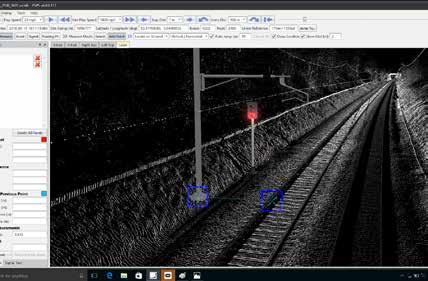
Reduce Costs
The rail industry is changing, fast. The need to improve e ciency and reliability, whilst minimising disruption and costs has never been greater.
SLEEPER SPACING INDEPENDENT
Innovative solutions are needed. Whether it’s a temporary, semi-permanent or permanent access point, whatever the sleeper spacing, our customers can install a 10.8m RRAP in less than 90 minutes, reducing possession times and costs. Rosehill Rail – Setting New Standards For more information, or to enquire about training, please call the Rosehill Rail sales team on +44 (0)1422 317 473, or email info@rosehillrail.com
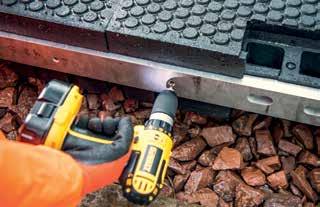
Quick and easy to install
6 February 2020 Business Design Centre - London
Road Crossings // Road Rail Access // Pedestrian Crossings // Anti-Trespass
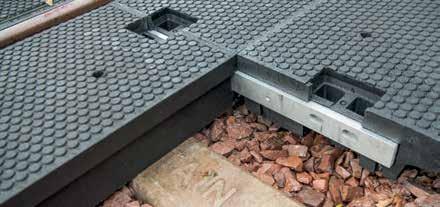
Locking plates link eld and gauge panels
Rosehill Rail_Rail Engineer Half Page Advert FEB2020_Reduce Costs.indd 1 14/01/2020 10:24
EXPERIENCED PROVIDER FOR
KEY CLAMP

GRP HANDRAIL
Call or email today for a quote from your drawings or product requirements.
T 0117 970 2420 E sales@eziklampsystems.com GET YOUR EZI QUOTE WITHIN 1 HOUR
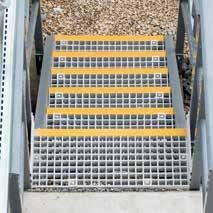
GRP STEPS & WALKWAYS
GRP FENCING
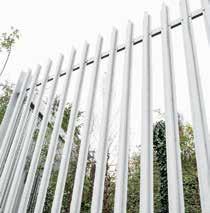
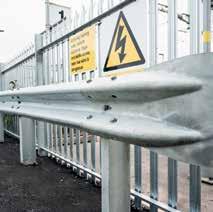
ARMCO CRASH BARRIER










